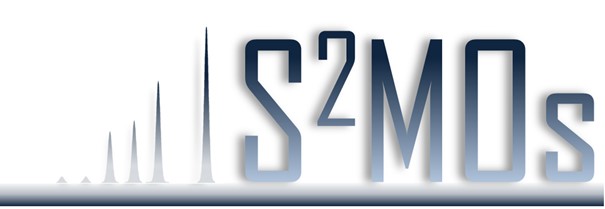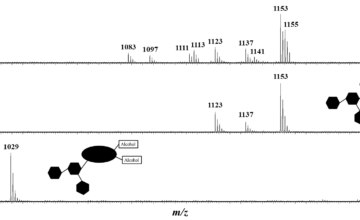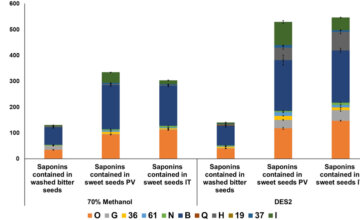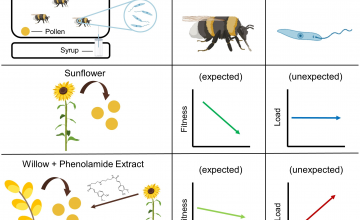New paper on the effects of Electrospray Ionization mechanisms and structural relaxation for polylactide ions.
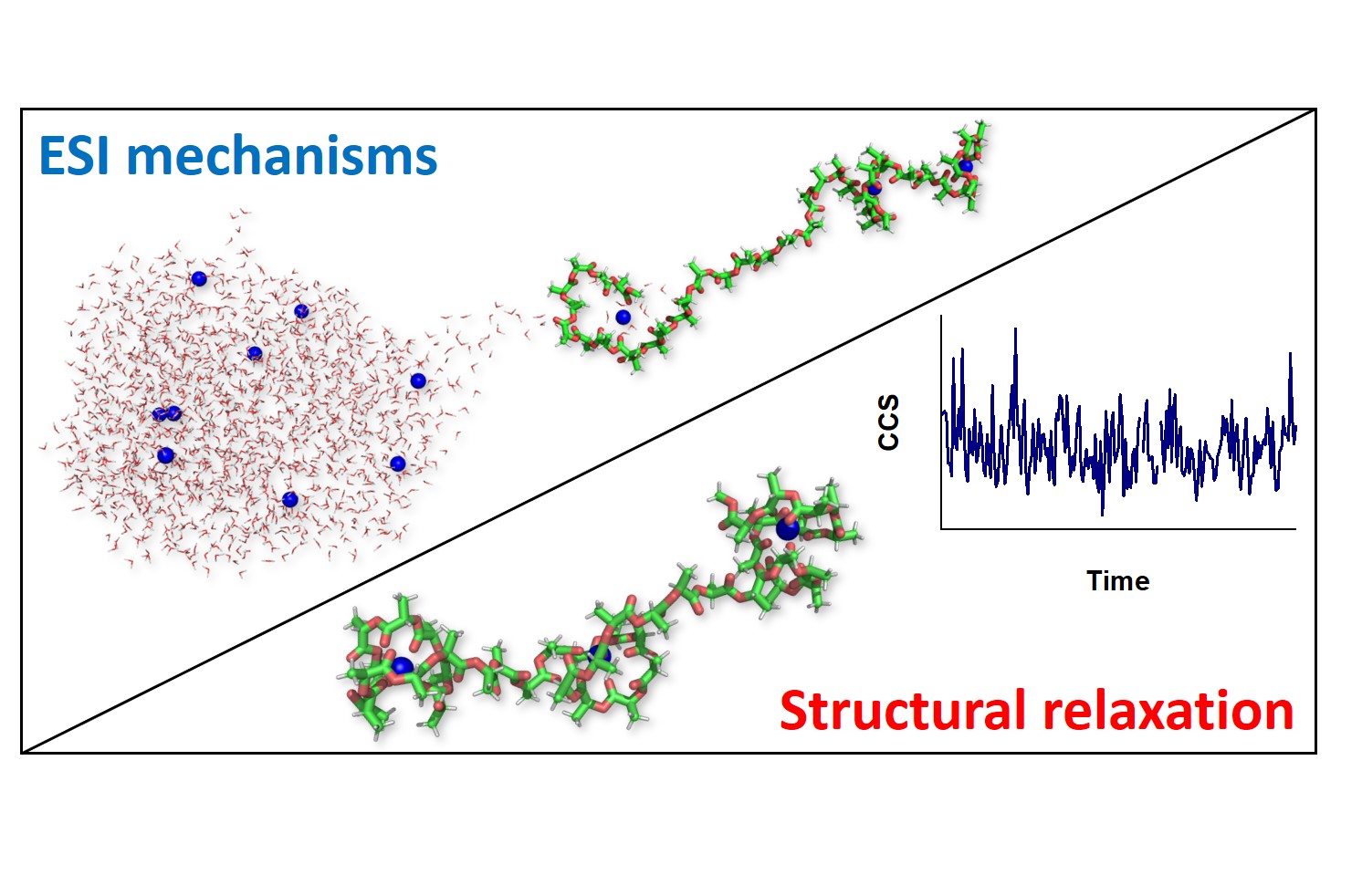
A new paper in collaboration with the laboratory of Lars Konermann was just published in Physical Chemistry Chemical Physics (PCCP).
Recent advances in molecular dynamics (MD) simulations have made it possible to examine the behavior of large charged droplets that contain analytes such as proteins or polymers, thereby providing insights into electrospray ionization (ESI) mechanisms. In the present study, we use this approach to investigate the release of polylactide (PLA) ions from water/acetonitrile ESI droplets. We found that cationized gaseous PLA ions can be formed via various competing pathways. Some MD runs showed extrusion and subsequent separation of polymer chains from the droplet, as envisioned by the chain ejection model (CEM). On other occasions the PLA chains remained inside the droplets and were released after solvent evaporation to dryness, consistent with the charge residue model (CRM). Following their release from ESI droplets, the nascent gaseous PLA ions were subjected to structural relaxation for several μs in vacuo. The MD conformations generated in this way for various PLA charge states compared favorably to experimental results obtained by ion mobility spectrometry-mass spectrometry (IMS-MS). The structures of all PLA ions evolved during relaxation in the gas phase. However, some macroion species retained features that resembled their nascent structures. For this subset of ions, the IMS-MS response appears to be strongly correlated with the ESI release mechanism (CEM vs. CRM). The former favored extended structures, whereas the latter preferentially generated compact conformers.
https://pubs.rsc.org/en/Content/ArticleLanding/2020/CP/C9CP06391A#!divAbstract

